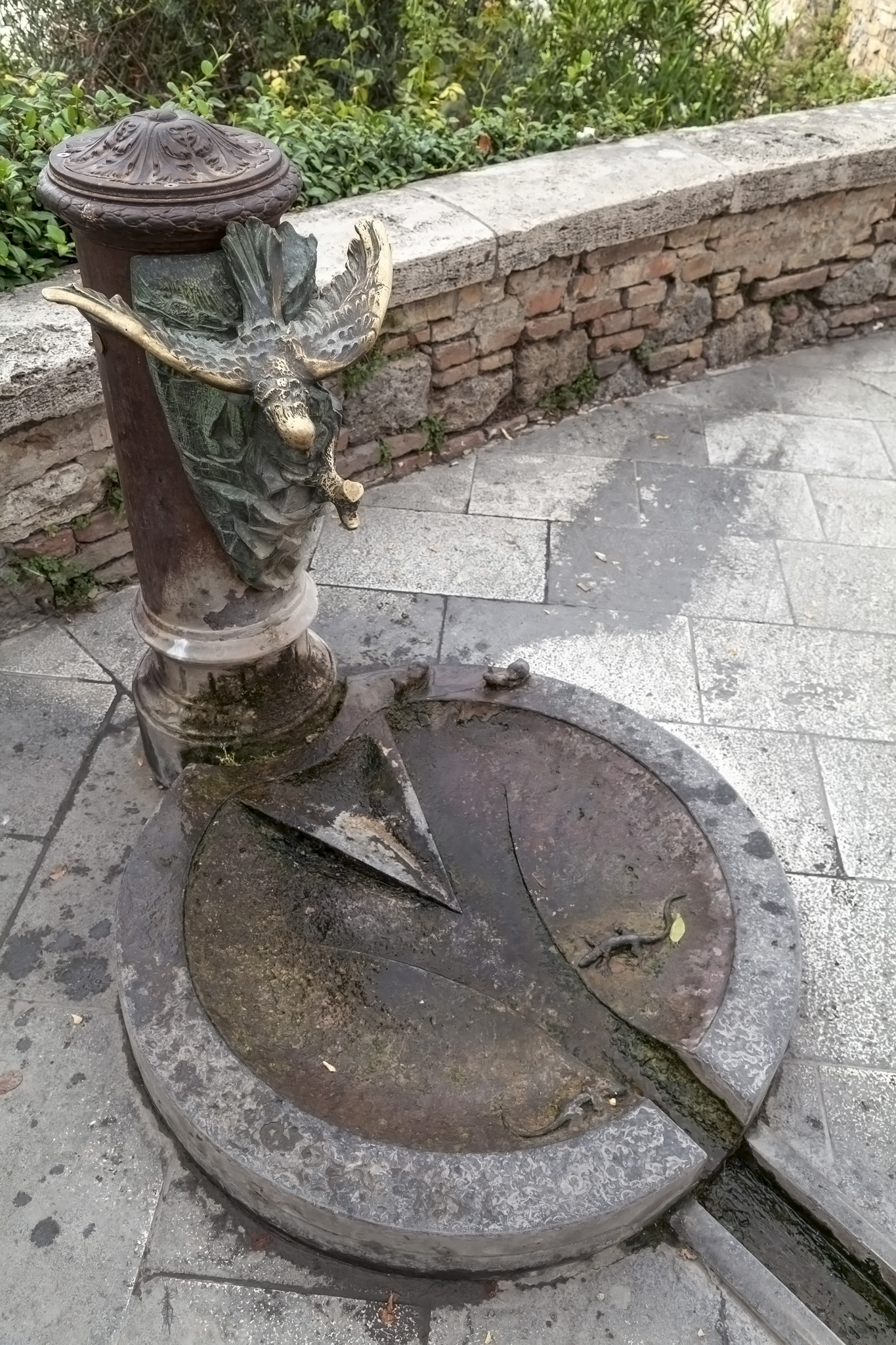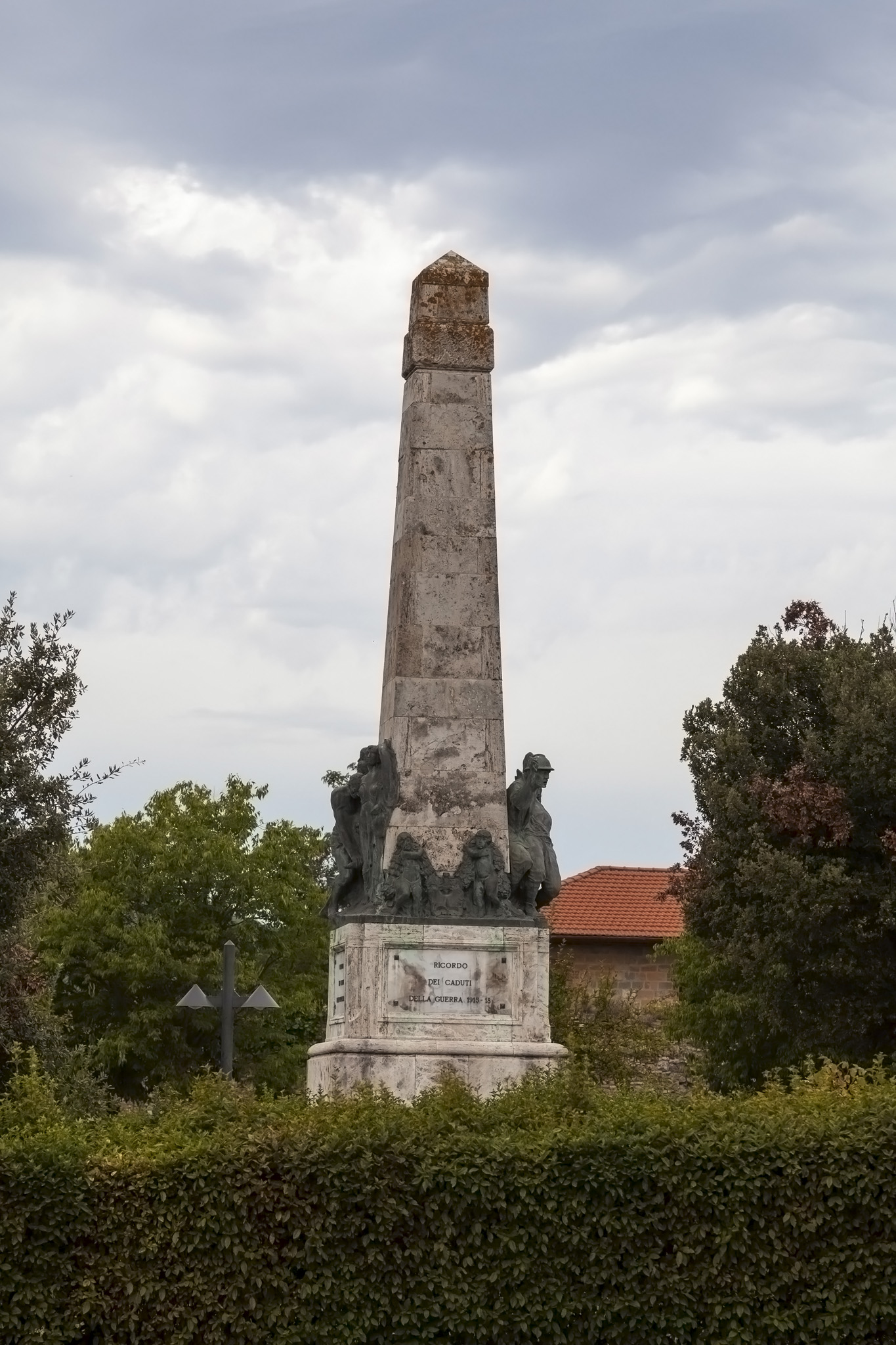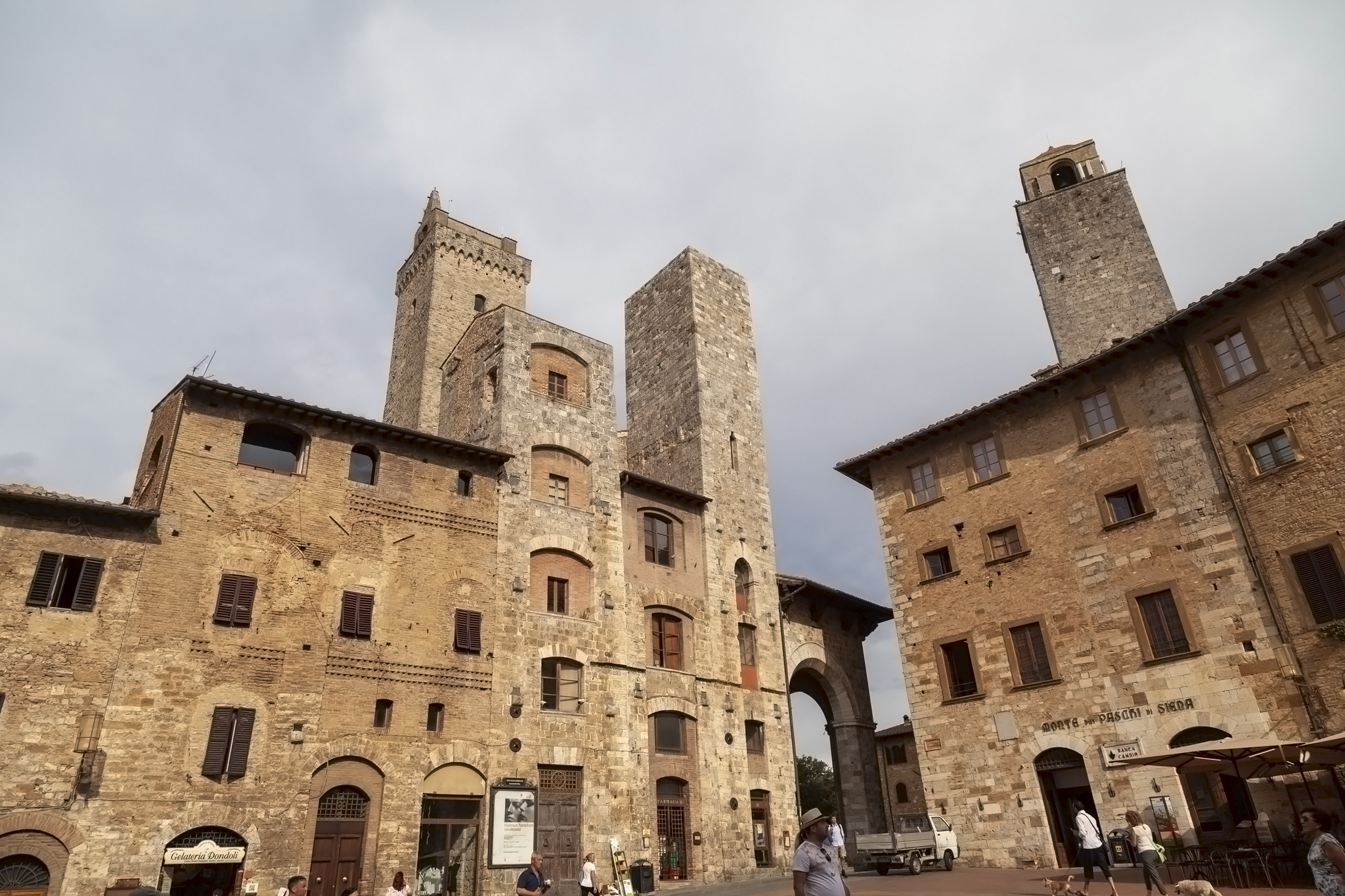The last full day aboard Emerald Princess saw us arrive at the port of Livorno, Italy. This is the port you’d want to dock at on a cruise if you wanted to take an excursion to see the city of Florence and we did want to see the city of Florence, but with another cruise hitting this same port already booked we made the decision that Florence could wait until then. For this day in Italy we decided to visit that other tourist trap in the region, Pisa, but ahead of that, a stop in a place called San Gimignano.
The sun hadn’t quite risen when I stepped out onto the balcony during Emerald Princess’s final approach into the port.
One thing we’ve noticed about this part of the world now across a few cruises is that it’s very susceptible to summer storms. Breakfast was accompanied by a downpour and lovely rainbow, and the clouds rolled in again as our tour bus left the port which then led to several large lightning strikes near the ship. Having seen quite a few people walking off our vessel and others nearby to do their own thing in Livorno we barely managed to suppress grins as we imagined how soaked they must be getting.
Fortunately for us, though, we left the thick cloud cover of the coastline in our wake (that’s a cruise-related idiom absolutely free of charge for you) as we drove inland and by the time we reached our first stop we had only a thin sheet of cloud and the Mediterranean warmth with which to tolerate.
Brace yourself now for some useful information regarding this excursion to San Gimignano in case you’re thinking of doing it while on a cruise and you have some mobility issues. The view from where the bus parks is fabulous as you can tell from the photos below – those green fields, gentle hills, the cypress trees and vineyards clearly visible making you fairly confident this is Italy even without knowing that for certain – but this is a good five minutes away on foot from the town itself and it’s at the bottom of a reasonably significant slope to get to San Gimignano’s level. The town itself is also not exactly flat, although the slopes in the narrow alleys between the buildings tend to be far more gentle.
From the car park it was up the sloping road, up the next sloping road, up the set of steps, then towards the gate at the southern end of the town. This was the Porta San Giovani, easily identifiable by its close proximity to the Bastione San Francesco, part of the medieval, walled defences of San Gimignano.
And now for a brief history lesson. The site of San Gimignano has likely been occupied going back into prehistory but there is evidence to show there was a settlement during the Etruscan period. The legend of the town’s formation dates to the first century BCE and the erection of a castle there by one of a pair of brothers fleeing Rome. The name of San Gimignano comes from around 450 CE when a bishop intervened to prevent the town’s destruction by ostrogoths rampaging in the area.
The middle ages saw the town start to flourish as it was on both a trading route and pilgrimage route in Italy but the Italian penchant for territorial and religious disputes necessitated fortifications being built too. The towers for which San Gimignano is most famous came about thanks to factions within the town supporting either the Guelphs or Ghibellines, the groups who favoured either the Pope or the Holy Roman Emperor as ruler of the country, and family rivalries saw towers of increasing size being constructed. At one point there were seventy two towers in San Gimignano, the tallest of which rose to seventy metres in height. Only fourteen towers remain.
San Gimignano’s demise as an important town coincided with the arrival of the Black Death in 1348. Half the people died and the town fell under the rule of nearby Florence but investment ceased. It wasn’t until the nineteenth century that the fairly well-preserved medieval town with its impressive skyline architecture began to be seen as a tourist destination and started to attract visitors and artists back within its walls.
Fans of confusing geometrical terms will be pleased to know that the main square of San Gimignano is in the shape of a triangle. Piazza della Cisterna has a name that conjures up imagery of the back of a toilet but is a very pleasant area, surrounded on all sides by brick buildings with some lovely views of the famous towers and with two attractions of note. The most obvious of these is the octagonal pedestal over the top of the cistern from which the three-sided square gets its name. The cistern was constructed in 1287 while its decorative top is a later addition from 1346.
The second attraction is a shop: Gelateria Dondoli has won numerous awards for its gelato so if you fancy some of the Italian delicacy to fight off the heat and humidity of this part of the world then that seems to be the place to visit. We were advised by our tour guide to head there early if we wanted any as there would likely be a queue later. We decided instead to make use of the free time now afforded us to see what else San Gimignano had to offer.
The main thing San Gimignano had to offer was views of the towers for the time we had during this part of the day’s excursion. Adjacent to the Piazza della Cisterna was the Piazza del Duomo. These two open spaces provide the nicest views of the towers from within the town and this second square was lined with cafés, the town hall, and the Collegiate Church up a set of steps.
The biggest problem we find with organised tours – especially those like this one that incorporate several stops during the day – is that you always run the risk of either having too much time in a place you’re not interested in or not enough to really experience all that a place has to offer. San Gimignano felt like it belonged in the former category during the first five minutes of wandering around . I took photos, of course, seeking out different angles to snap the towers as they were the things that appeared to be most interesting prior to booking this trip, but we quickly reached a point where we’d run out of things to see.
However, the reason we’d run out of things to see, perversely, was because after about five minutes we realised there was a lot more to San Gimignano than we’d realised – the church housed some interesting frescoes, apparently, and there was an art museum plus a torture museum and a museum dedicated to the death penalty (these places always attract us), more churches, art galleries, and potential visits to the towers too – but we were either too early to visit some of them or there was just not enough time to see what was open in any detail at all so we had to eliminate them as options. Just an extra half an hour in San Gimignano would have given us the chance to see or do something on our own but we had to be content with just walking about and shooting photos. That was a real shame.
We briefly wandered into the courtyard area of Dormitorio dei Cappellani where the Museum of Sacred Art was located but wondered whether we’d accidentally bypassed the place where you might have to buy tickets to view what was inside so quickly made an exit.
Our meeting point was back in Piazza della Cisterna so it was to there that we made our way and where we discovered our guide had been right about the queue that would form at the gelateria. More tour groups had clearly arrived in the town and we spotted strangers and people we recognised from our bus too among those lined up to buy some gelato and those eating it near the the cistern pedestal. As for us, we found a souvenir shop and parted with some Euros inside.
Once everyone had arrived and had their heads counted (we all had one, as expected) we were then led back through the narrow Via San Giovani street southwards to the gate through which we’d arrived and back down the steps and sloping roads to the car park where our bus awaited. The car park backs onto a supermarket and the final photo I took in the area of San Gimignano was of a nun pushing a trolley which amused me for some reason.
To summarise this excursion to San Gimignano I’d say that as a tour it didn’t have enough to recommend it. However, San Gimignano is a place worthy of a visit to see what the town has to offer in its own right. I think we could quite happily spend half a day to a day here if we were in the region.
This was only the first of three activities lined up for this cruise tour from Emerald Princess, though, and with San Gimignano finished our next stop would be to a winery for a light lunch and some wine-tasting. I won’t lie: that was an important factor in picking this excursion in the first place. The wine-tasting will be covered in the next post in this cruise travelogue series and after that will come our visit to Pisa and its famous leaning tower to cap off a very tower-heavy day of exploring this part of Italy.






















































